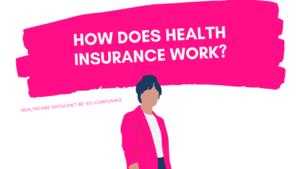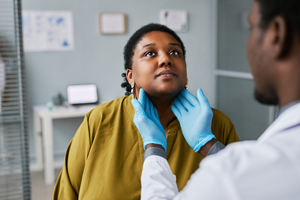Key points
- Running injuries are common, with 65% of runners injured annually and 50% of those injuries recurring.
- Nine common running injuries that can be treated at urgent care include runner’s knee, Achilles tendonitis, plantar fasciitis, shin splints, stress fractures, patellar tendonitis, ankle sprains, pulled muscles, and blisters, chafing, and side stitches.
- Urgent care can provide immediate treatment for these injuries, often involving rest, ice, compression, elevation, physical therapy exercises, and pain medication.
- Ignoring symptoms of these injuries can lead to more severe conditions, making immediate medical attention crucial.
- The article concludes by encouraging runners to book a same-day urgent care appointment if they sustain a running injury, as this can help them get back to their running routine faster.

Whether you’re an ultra marathon runner, participate in the occasional 5k, or are a hopeful beginner, running injuries happen. Sustaining a running injury can be both scary and frustrating. Knowing which injuries are the most common among runners, tips on preventing them, and what to do if they happen can go a long way in easing your mind.
In spring 2017, an estimated 65 million Americans went for a jog or run—that’s impressive. In honor of Global Running Day, taking place on June 6, 2018, Solv has compiled a list of 9 common running injuries that can be treated at urgent care.
What is Global Running Day?
Before we dive into some common running injuries that can be treated at urgent care, let’s hear from the Global Running Day organization on what they’re all about:
“Global Running Day is a worldwide celebration of running that encourages everyone to get moving. It doesn’t matter how fast you run or how far you go—what’s important is that you take part, and how you do it is up to you. Run a lap around your block, take your dog for a long walk, or call your friends for a pick-up game in the park. The important thing is that you have fun being active—and you inspire others to join you.”
Each year, runners from around the world pledge to take part in Global Running Day. If you’re interested in making your own pledge, you can do that here.
Are running injuries common?
Running injuries are, unfortunately, quite common. In fact, according to Running Stats, 65% of all runners are injured within a given year. To make matters worse, 50% of running injuries are recurring—meaning the same injury happens over and over again.
While statistics like this may make you want to look for a lower impact form of exercise (water aerobics, anyone?), you don’t need to let them deter you from running. Instead, let them serve as motivation to learn proper running techniques, listen to your body, and see a doctor when something is wrong (even if it seems minor).
9 running injuries that can be treated at urgent care
Running Stats, along with several other running organizations, keep a close eye on reported injuries from runners. Paying attention to the injuries that occur most often allows experts to recommend methods for injury prevention and recovery. Below, learn about the 9 most common running injuries.
Running injury 1: Runner’s knee
Runner’s knee, also called chondromalacia, is not a knee injury in itself but, rather, a term used to describe any of several conditions that cause pain around the kneecap or patella. These conditions include anterior knee pain syndrome, patellofemoral malalignment, chondromalacia patella, and iliotibial band syndrome.
According to research from the Harvard Medical School, women (especially women who are of middle age) are more prone to getting runner’s knee than men. People who are overweight are also more likely to develop an injury that falls under the runner’s knee classification.
With over 200,000 cases in the United States per year, runner’s knee is an incredibly common running injury.
Can runner’s knee be treated at urgent care?
Yes, runner’s knee, like most physical injuries, can be treated at urgent care. In addition to recommending that you follow the RICE method (Rest, Ice, Compression, Elevation), your urgent care physician or physician’s assistant will likely recommend specific physical therapy exercises, as well as prescribe you the a pain medication, such as naproxen.
Running injury 2: Achilles tendonitis
Achilles tendonitis is inflammation of the Achilles tendon, located on the back of the heel. This running injury is typically caused by repetitive stress to the tendon, though tight calf muscles and bone spurs can make inflammation more likely. Similar to runner’s knee, over 200,000 cases of Achilles tendinitis are diagnosed in the U.S. each year.
Can Achilles tendonitis be treated at urgent care?
Achilles tendonitis does require a medical diagnosis and can often require surgical treatment if left untended to for a long period of time. However, if you just began experiencing symptoms of Achilles tendonitis, you can go to urgent care for short-term treatment. It’s important not to ignore symptoms—sports injuries left untreated often get worse.
Running injury 3: Plantar fasciitis
More than 3 million Americans get plantar fasciitis each year, with women experiencing it more than men. The thick, fibrous band of tissue, called fascia, that runs from your heel to your toes, supports the muscles and arch of your foot. If they get overly stretched, tiny tears can occur, causing pain and inflammation. This is what is known as plantar fasciitis.
Unsupportive running shoes or excessive running can be major contributors to this running injury.
Can plantar fasciitis be treated at urgent care?
If you suspect you might have plantar fasciitis, you should book a visit at a local urgent care. Your doctor will be able to examine your foot to determine the origin of the pain and devise a treatment plan that’s right for you. Treatment for plantar fasciitis is often a combination of steroid injections, physical therapy, and nonsteroidal anti-inflammatory drugs.
Running injury 4: Shin splints
Shin splints are a cumulative stress disorder, that happen due to repeated pounding and stress on the bones, muscles, and joints of the lower legs. The term shin splints refers to pain along the front of your shin bone, usually between the knee and ankle. Healthcare professionals also call this running injury medial tibial stress syndrome (MTSS). If you think you have shin splints, you should stop running right away.
Can shin splints be treated at urgent care?
Treatment for shin splints can usually be done at home. Elevating and icing your legs, taking an over-the-counter anti-inflammatory, and using a foam roller on your legs can all help improve shin splints. While it’s typically not necessary to go to urgent care for shin splints, if you feel that they aren’t improving, this could be a good option.
Running injury 5: Stress fracture
Unlike a regular fracture, stress fractures are caused by repeated mechanical stress, not sudden impact. People who run long distances are most likely to develop stress fractures. If a stress fracture isn’t treated, it can lead to more serious, long-term injuries including a broken bone or arthritis. The last thing a runner needs is a broken leg!
Can a stress fracture be treated at urgent care?
The most common treatments for mild stress fractures are elevation and rest. However, if your stress fracture is particularly bad, you can go to urgent care to have the bone immobilized with a sprint or cast. Be sure to let your doctor know about all of your symptoms, so they can recommend the best treatment plan.
Running injury 6: Patellar tendonitis
Common among distance runners, patellar tendonitis occurs when overuse results in tears in the patellar tendon, which connects the shinbone and the kneecap. Pain from this running injury can range from mild to severe. If you think you might have patellar tendonitis, or are experiencing any level of pain, see a doctor right away. Not getting the proper medical treatment could cause limited mobility in your day-to-day life, not just during runs.
Can patellar tendonitis be treated at urgent care?
You can head to your local urgent care for patellar tendonitis. Your urgent care provider may recommend an x-ray, MRI, or ultrasound to diagnose the injury and develop a plan for treatment.
Running injury 7: Ankle Sprain
When the ligaments that support your ankle stretch beyond their limit and tear, an ankle sprain occurs. This running injury is common and can range from mild to severe, depending on the extent of damage to your ligaments. If you think you’ve sprained your ankle, stop running immediately and elevate the injury. Don’t push through the pain—ankle sprains that don’t heal properly can cause serious long-term issues, including ankle instability and arthritis.
Can an ankle pain and sprains be treated at urgent care?
While, typically, ankle sprains will heal on their own, they can be treated at urgent care. At-home treatments like rest, elevation, and ice will help mild sprains. If your ankle is swollen or you can’t put weight on your ankle, head to urgent care right away.
Running injury 8: Pulled muscles
If you’ve ever had a pulled muscle, you know they are nothing to joke about. Pulled muscles occur when your muscle is torn or overstretched, typically as a result of overuse or improper use. Any muscle can become strained, though the most common strains occur in the lower back, neck, shoulder, and hamstring.
Pulled muscles can range from mild to severe and cause decreased mobility. Severe strains can require medical treatment.
Can a pulled muscle be treated at urgent care?
Rest, ice, compression, and elevation are the most commonly recommended treatments for a pulled muscle. You can also take an over-the-counter anti-inflammatory, apply heat after three days, and gently stretch the muscle, as long as it isn’t painful to do so.
If the pain persists after a week, your muscle is numb, you’re bleeding, or you can’t walk or move your limbs, seek medical attention at urgent care. An urgent care center will be able to provide a physical exam, including an x-ray or MRI, if one is needed.
Running injury 9: Blisters, chafing, and side stitches
So, technically, blisters, chafing, and side stitches are all separate injuries that can occur while running. Blisters often occur due to improper footwear and chafing happens when skin rubs against skin. Both can be painful—and require medical attention if they get too bad. Thankfully, both can be easily avoided by wearing shoes that fit well and wearing running clothes that cover your thighs or any other body part prone to chafing, respectively.
Side stitches affect nearly 70% of runners and often are a sign of poor running posture. Though painful, they can generally be corrected by bending forward slightly and tightening your core.
Can blisters, chafing, and side stretches be treated at urgent care?
Unless chafing turns into a rash, it can usually be treated by cleaning the affected area and allowing it to air dry. Blisters, too, can often be treated at home. If they don’t heal or get worse, going to urgent care is a good option. Side stitches don’t require immediate urgent care treatment, however, if they persist, head to urgent care to find out if there’s something else contributing to this painful runner’s injury.
Running is both a great form of exercise and a way to boost your mood. Whether you run around your neighborhood or compete in long-distance races, keeping yourself free of injury is the most important thing. If you do sustain a running injury, it’s a good idea to book a same-day urgent care appointment. Patients who book through Solv spend an average of 8 minutes waiting for care, so you can get back to your life—and run—faster.
FAQs
How common are running injuries?
Running injuries are quite common, with 65% of all runners experiencing an injury within a given year.
What are some common running injuries that can be treated at urgent care?
Common running injuries that can be treated at urgent care include runner’s knee, Achilles tendonitis, plantar fasciitis, shin splints, stress fractures, patellar tendonitis, ankle sprains, pulled muscles, and blisters, chafing, and side stitches.
What treatments might be recommended at urgent care for these running injuries?
Treatments often involve rest, ice, compression, elevation, specific physical therapy exercises, and pain medication like naproxen.
What happens if I ignore symptoms of these running injuries?
Ignoring symptoms can lead to more severe conditions, such as surgical treatment, broken bones, arthritis, or limited mobility.
How quickly can I get treatment for a running injury at urgent care?
Patients who book through Solv, for example, spend an average of 8 minutes waiting for care.
Can plantar fasciitis be treated at urgent care?
Yes, if you suspect you might have plantar fasciitis, you should book a visit at a local urgent care. Your doctor will be able to examine your foot to determine the origin of the pain and devise a treatment plan that’s right for you.
Can shin splints be treated at urgent care?
While it’s typically not necessary to go to urgent care for shin splints, if you feel that they aren’t improving, this could be a good option.
Can a stress fracture be treated at urgent care?
Yes, if your stress fracture is particularly bad, you can go to urgent care to have the bone immobilized with a sprint or cast.









